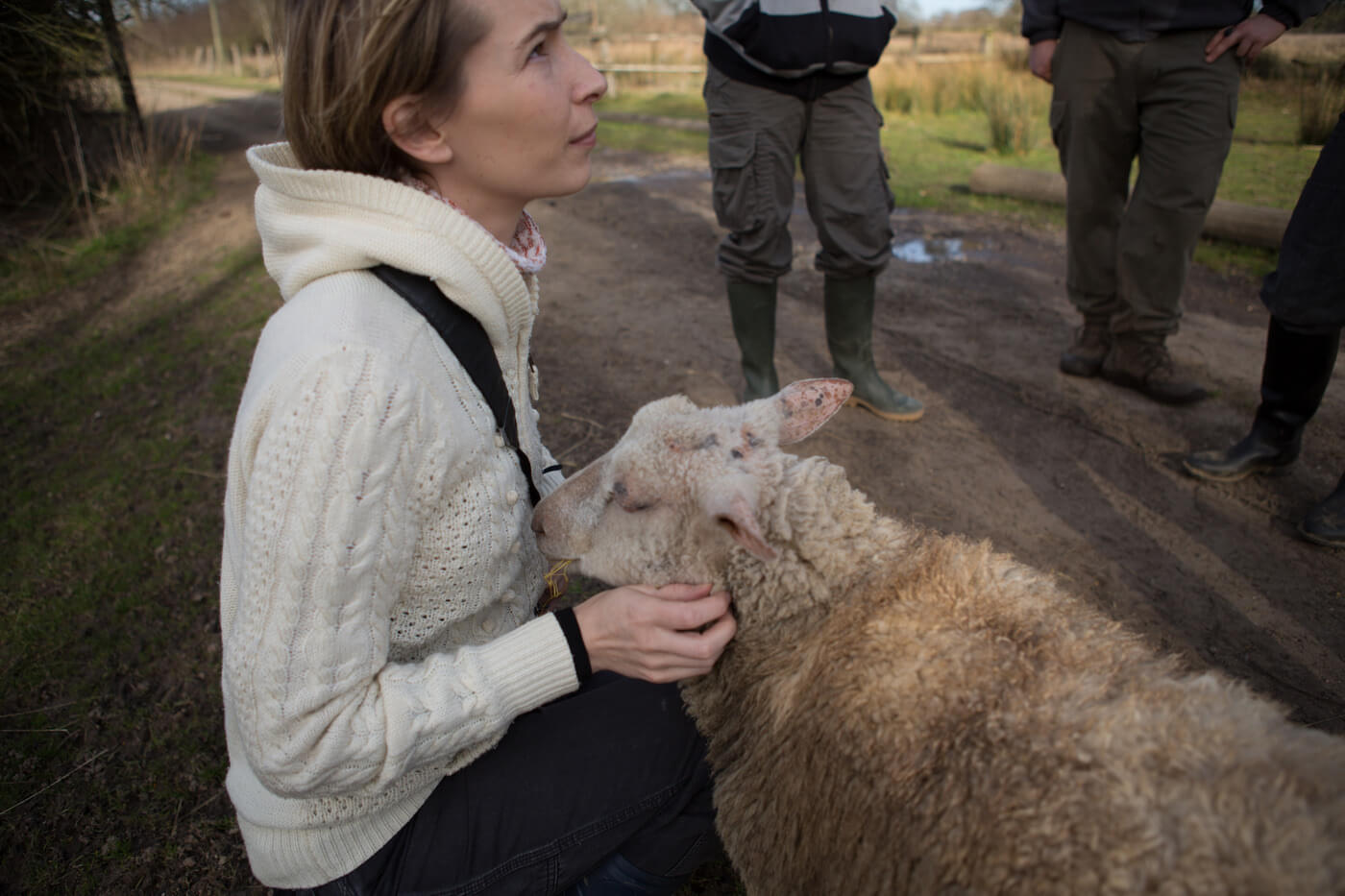News
RFK’s New Dietary Guidelines Delayed Again, Amid Concerns
Diet•6 min read
Explainer
It's a controversial question. So we put together a comprehensive timeline tracking 24 surveys of vegans over the past 25 years.


Words by Matthew Zampa
Before you get all excited that this controversial question has finally been put to bed, the short answer is, it’s hard to tell exactly how many vegans there are. Either way, we’re looking at a range of vegans, not an exact number, somewhere between 1% and 2% of the U.S. population.
According to the latest in a series of at least 24 different studies conducted by polling services, world-renowned publications, the federal government, and animal advocacy platforms over the past 20 years asking a cumulative total of more than 80,000 Americans if they consider themselves vegan or not, there are as many as 6.5 million self-identifying vegans in the U.S. today.
This number has remained fairly constant over the past 10 years. Fewer than one in 10 Americans adhere to a meat-free diet, and that number hasn’t changed very much recently, despite the remarkable number of plant-based products quickly becoming household names. Today, there are just about as many vegetarians in the U.S. (5%) as there were in 2012. Vegans recorded a similarly small amount of growth in the same time.
But how can we possibly be eating $3.3 billion dollars worth of plant-based food and not have a growing vegan population? Well, not all plant-based foods are meant for vegans. Many of them are targeted at meat eaters. Just look at all the trendy plant-based burgers popping up at Burger King and White Castle. Almost 90% of the Impossible Burgers sold at the fast food chains are being purchased by meat eaters.
Sure, it might be safe to say that there are more vegans in the U.S. today than there were 10 years ago, but we’re still speculating. To help you get an idea of the best estimates that have been floating around over the past 25 years, we put together a comprehensive timeline of the most credible surveys tracking the number of vegans in the U.S.
Click here to view the full timeline.
Citations can be found at the bottom of this article.
Relying on self-identification in diet-based surveys is risky. It’s hard to know how many people who say they follow one diet actually eat that way. But, with that being said, it’s important to remember that veganism and vegetarianism are not about being perfect. It’s about doing what we can.
In the Continuing Survey of Food Intakes by Individuals (1994-1996), a big government study that surveyed about 10,000 people, researchers found that 0.9% of Americans self-identified as vegans. The study’s methodology went like this: participants were first asked if they identify as vegetarian or vegan. Then they were asked to specifically identify foods they did and did not eat, helping to distinguish between participants who ate a mostly vegan diet versus those who ate entirely vegan.
Veganism and vegetarianism are not about being perfect. It’s about doing what we can.
To get the full picture, researchers also asked about what participants had eaten in the past 24 hours on two separate occasions. Of the self-identifying vegetarians, 64% had eaten at least 10 grams of meat in one or both of the 24-hour periods. Clearly, the word vegetarian (and probably vegan) doesn’t mean the same thing to everyone, especially when different cultural norms, religious beliefs, and language barriers come into play.
In the context of diet-based surveys, words like vegetarian and vegan can be imprecise and often polarizing. The most successful surveys are able to narrow down the number of self-identifying vegans by asking consumption-based questions, like what foods do you eat. Even so, they may not be asking the right question. How about, what foods do you eat and why?
Diet-based surveys are challenging for a lot of reasons. It’s hard to get hold of people and every method is a bit different—by phone, in-person, online. Some surveys don’t account for the latest census data. Others don’t ask the right questions. Every pollster will admit, it’s possible to get an accurate number from an inaccurate sample size, and vice versa. Some take their best guess. The long and short of it is: the number of vegans in the U.S. at this precise moment in time is frankly not that important. What’s way more important is the number of animals born and raised on factory farming where they will live their entire lives before being mutilated, abused, and killed. That’s the problem, and it’s a really big one.
According to a new analysis conducted by animal rights think tank Sentience Institute, around 99% of U.S. farmed animals live on factory farms. The predominance of factory farming has caused an incredible amount of suffering since its onset in the late 80s and early 90s. As a result, over the past 30 years, consumers have certainly become more aware of what they are eating, especially consumers that eat meat.

In Technomic’s 2019 Center of the Plate: Beef and Pork Consumer Trend Report, 50% of consumers who eat beef said it’s important they eat beef that came from animals treated humanely, while 44% of frequent pork consumers said it’s important they eat pork that came from animals treated humanely.
Another survey conducted by YouGov reported that 63% of Americans said they were less likely to buy meat products from a company if they found out a company had a bad reputation for animal welfare. But there’s a catch. The survey also showed that 43% of Americans admit they “never” or “rarely” check to see what company processed the meat they buy.
It’s no question that consumers who are eating less meat but not adhering to a particular diet should be considered a part of the larger shift away from factory farming. And there are a lot of them. More than a third of Americans (39%) are actively trying to eat more plant-based foods, motivated by ethics, health, and the environment.
In general, the more information consumers have about what they’re eating, the more likely they are to think twice about where their food is coming from. Still, big meat and dairy companies do their best to distance the average consumer the amount of animal suffering in the food system today–with frightening success. Conscious consumers are well-aware of how much water goes into producing a pound of beef, but when it comes to the amount of suffering required to produce one steak, they turn a blind eye.
“Most people are woefully wrong about where their meat comes from. 75% of U.S. adults believe they usually buy humane products, yet only 1% of food animals live on non-factory farms,” said animal rights think tank Sentience Institute’s Executive Director Kelly Witwicki in reference to a 2017 poll conducted by the group in collaboration with Ipsos Group.
The idea of factory-farmed meat makes most people feel uncomfortable, so they justify eating animals by claiming their food was produced ethically–not on a factory farm. The majority of them are wrong. Less than one in every 100 chickens in the U.S. is raised on a farm with less than 125,000 birds. All of the rest, about 8.9 billion chickens every year in the U.S. alone, will live their entire lives on factory farms with metal sheeting for walls, the floor littered with a mix of animal waste, feathers, and tiny bones, and no windows to let even a sliver of light inside before they are sent to be slaughtered, labeled free-range, and sold at supermarkets. Where’s the compassion in that?
For ethical vegans and vegetarians, the numbers we cited above make all the difference for why they eat the way they do. But hey, people change their diets for a lot of reasons: to bring an end to animal farming, to fight for a livable climate, to promote health and personal growth, to be kind. There is no right answer here. The way we choose to eat will likely change a number of times over the course of our lives, and that’s okay. Ethical eating works like a spectrum, one that is trending towards compassion.
Vegetarian Resource Group (1994-2019)
2% of Americans say they are vegans in 2019. Sample size 2,027.
Gallup (2018)
3% of Americans say they are vegans. Sample size 1,033.
Top Trends in Prepared Foods (2017 and 2014)
In 2014, Top Trends in Prepared Foods reported that 1% of Americans were vegans. Then in 2017, 6% said they were vegans. Sample size and polling method unknown.
Kathryn Asher (2016)
1.1% of Americans say they are vegan. Sample size 26,466.
Faunalytics (2014)
2% of Americans say they are vegans. Sample size 11,429.
publicpolicypolling.com (2013)
7% of Americans say they are vegans. Sample size 500.
Gallup (2012)
2% of Americans say they are vegans. Sample size 1,014.
National Health and Nutrition Examination Survey (2007-2010)
In 2008, the NHANES found that 0.75% of Americans said they were vegans. Then in 2010, they reported 1.01% of Americans said they were vegans. Sample size 10,181.
Humane Research Council (Faunalytics) (2007)
1% of Americans say they are vegans. Sample size 3,200.
Time/CNN (2002)
About 0.2% of Americans say they are vegans. Sample size 10,007.
Continuing Survey of Food Intakes by Individuals (1994-1996, 1998)
0.9% of Americans say they are vegans. Sample size 9,854.